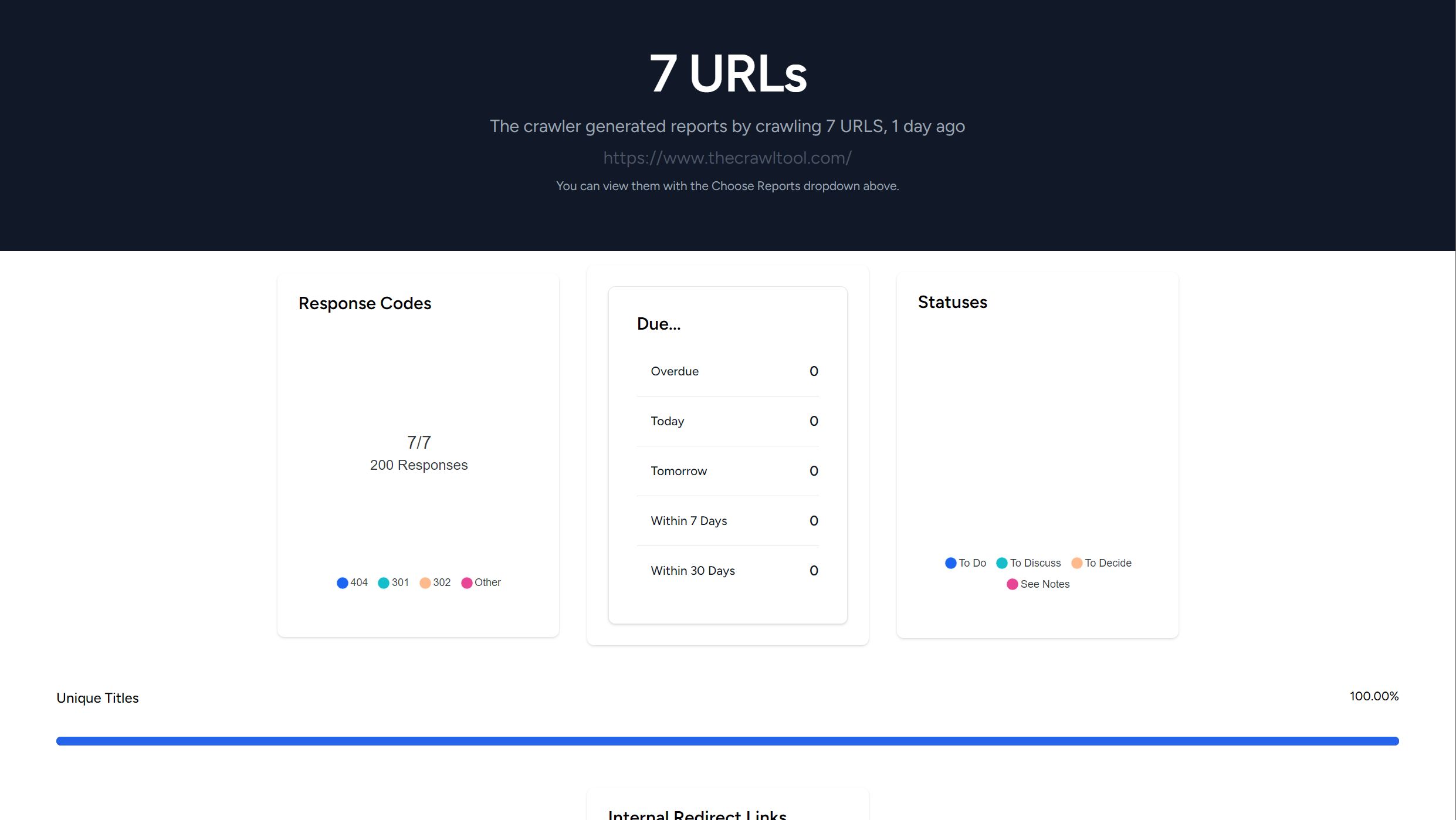The Project Dashboard
The project dashboard shows key information about your project/the site you are interested in. We consider this as a report in itself as it gives you a quick overview of the health of the most important aspects of the site.

At the top we have crawl information such as the number of URLs crawled, when they were crawled, and what the site URL was. As sites often change over time, this is important contextual information.
Response Codes
The Response Codes Block shows the response codes the crawler received for each URL it crawled. Ideally you want this to show as all 200 Responses, which indicates the web server did not have any problems serving the web pages, the pages were found, and there weren't any redirects.
In the real world, that's hard to achieve and a great site will often show a couple of redirects but no 404s and 500s. This overview is a quick look, you can view the specific urls and the response codes returned in the "Crawl Log" report.
Due...
Within the reports the owner can assign issues either to themselves or to a third party; additionally they can set a due date on these items.
The Due... block serves as an overview and shows how many items fall due within the project within specific amounts of time.
This helps you manage your expected upcoming workload.
Statuses
Like Due Dates, the owner and authorised third parties can assign statuses to items in the reports. The statuses block gives information about how many of each type of status there is.
This can help, for example, with knowing how many items still need discussion, or as a quick look at how much there is "To Do" in total.
Unique Titles
The Unique Titles bar is a quick look at how many of your titles are unique or not.
You goal should be to have every title being unique and descriptive of the page it is on.
Internal Redirect Links
This reports the number of times a site links to a redirect within itself. This is the number of links that a site owner could have not go through redirects by simply adjusted the link to point to the ultimate target itself. This makes the link quicker to navigate for a user.